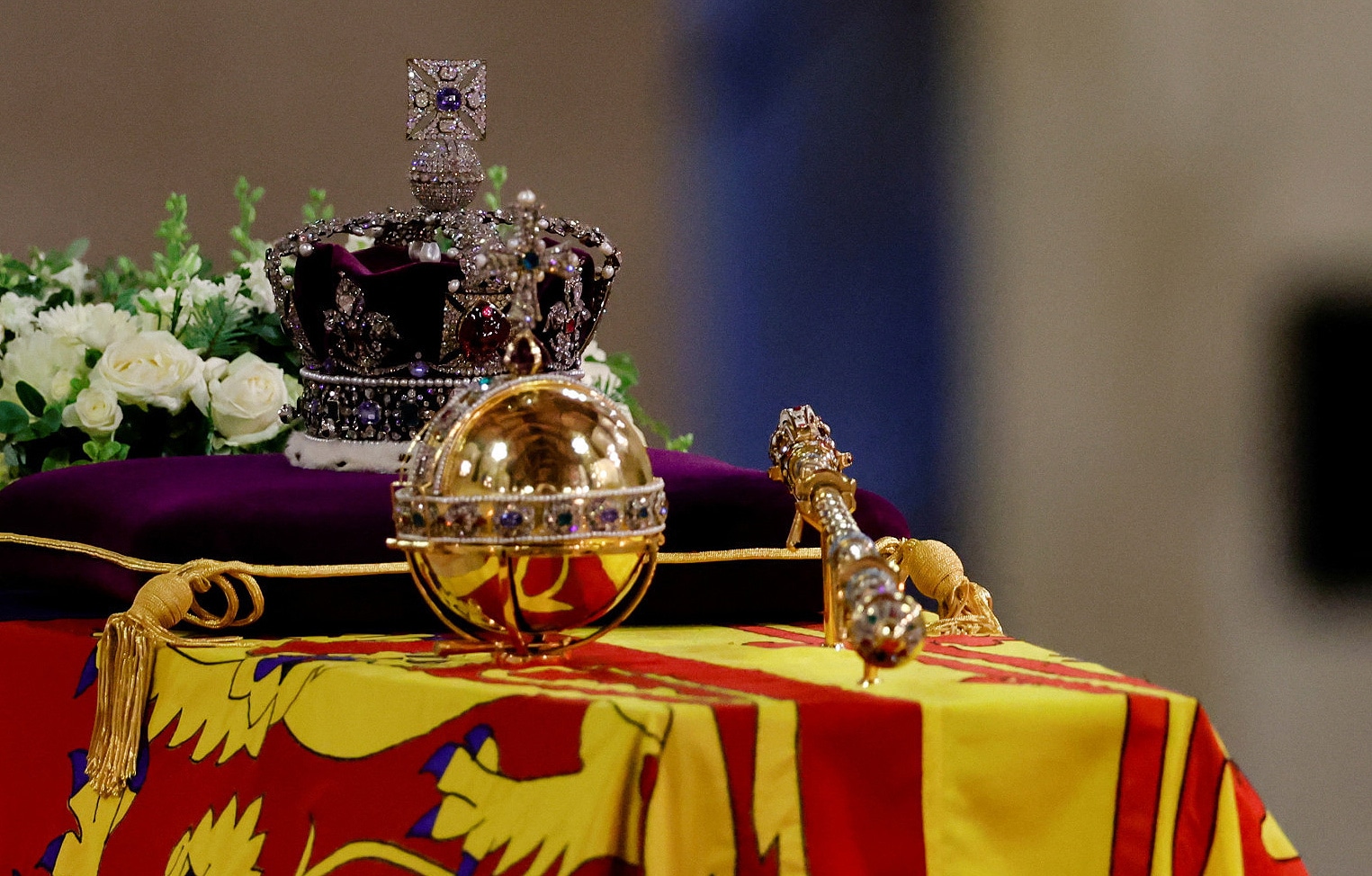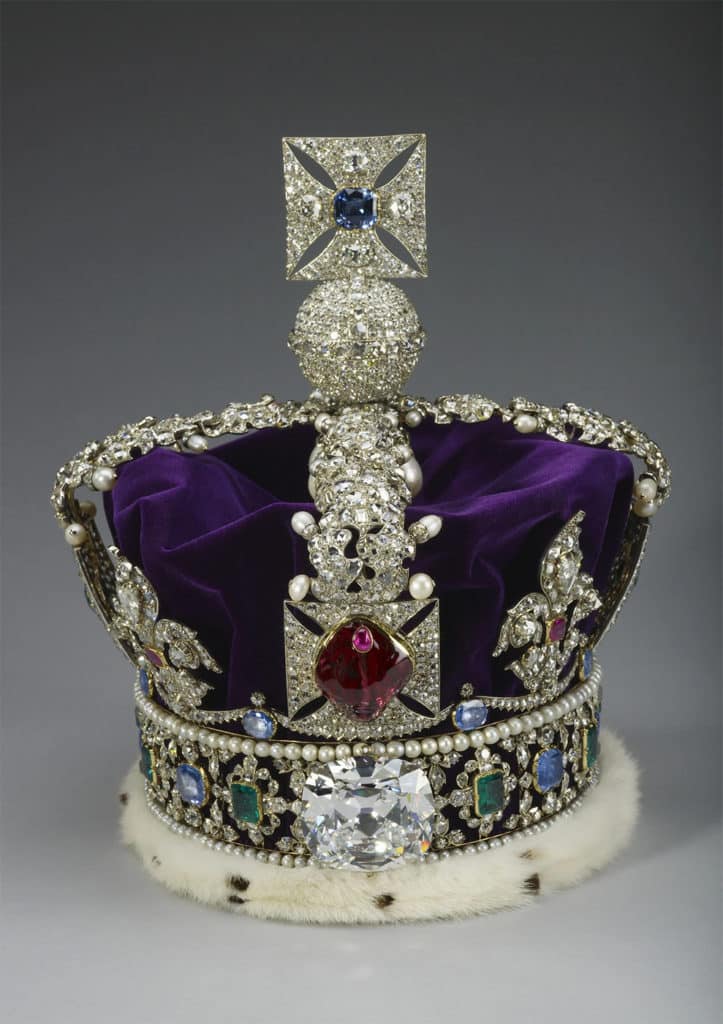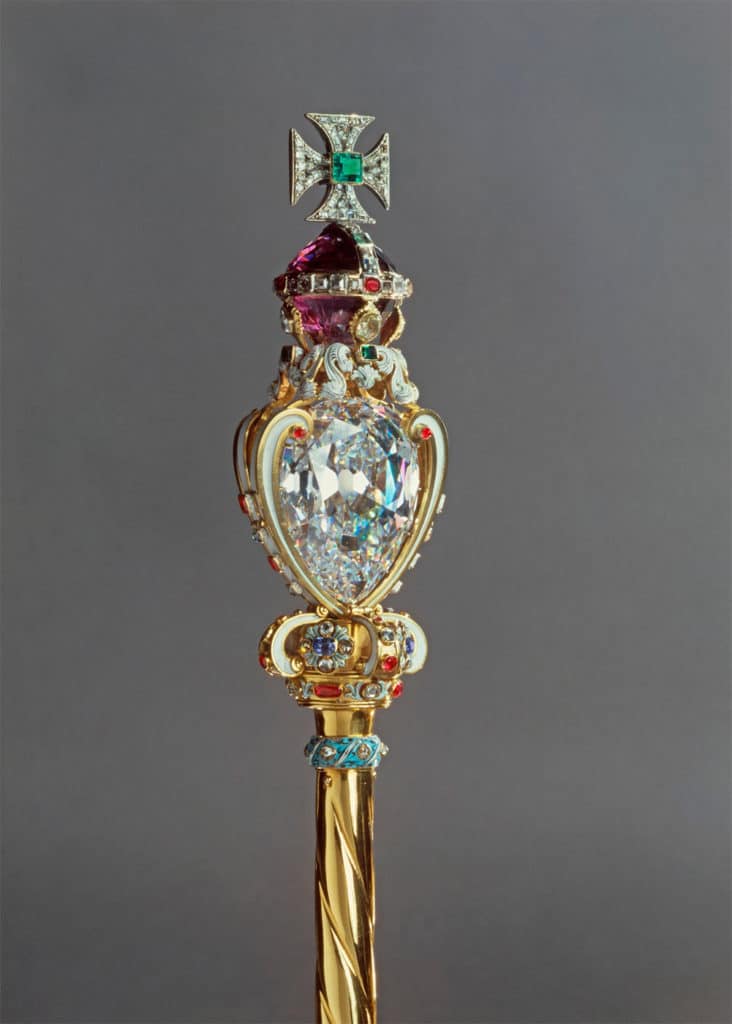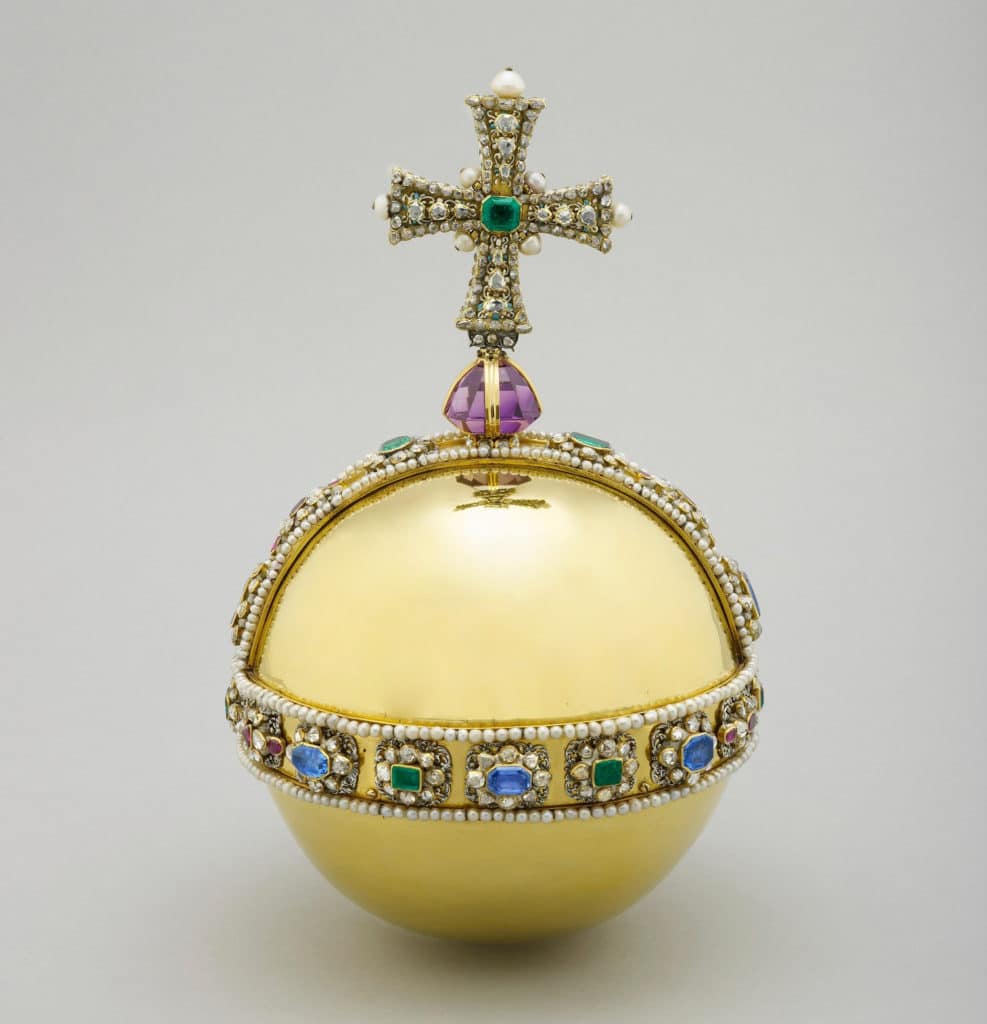Blog
Home » Diamonds blog » FUNERAL OF QUEEN ELIZABETH II FOCUSES WORLD ATTENTION ON IMPERIAL CROWN, SCEPTER AND ORB
Focus on

The three symbols of British royal power resting on the casket of Queen Elizabeth II – the crown, the scepter and the orb.
As the world has become transfixed by the pomp and pageant of the funeral of Queen Elizabeth II, three items of royal jewelry have caught the public’s attention, held above her casket as the late regent lay in state, and then again during the funeral service and procession, all the way to her final resting place in St. George’s Chapel at Windsor Castle.
The three priceless jewelry items, the imperial state crown, the scepter and the orb, are more than just royal decorations. They are symbols of the monarch’s position in Britain and the realm, as well as the religious role as head of the Church of England. The Crown represents a queen or kin’gs sovereign power over her or her subjects, while the orb representing Christendom. The scepter symbolizes the sovereign’s “temporal power under the Cross,” according to the British royal family’s website.
Unlike the Egyptian pharaohs, who used to be buried with their worldly wealth, the three jewelry items did not go with the queen ito her final resting place. According to the Daily Telegraph they would be removed at the end of the ceremony in St. George’s Chapel by Crown Jeweller Mark Appleby, assisted by the “Bargemaster” and the “Serjeants-at-Arms,” among whose prescribed jobs are to guard the crown, orb and scepter. The role of the Serjeants-at-Arms dates back all the way to 1415, during the reign of Henry V.
According to the Daily Telegraph, the three items will be passed into the custody of the Dean of Windsor, and will be placed on an altar. They will next be seen at King Charles III’ s official coronation, which will likely take place in 2023, 70 years after the coronation of his mother.
THE IMPERIAL CROWN
The crown that was viewed during the funeral was not the original worn by the earliest of English monarchs. That one was the St. Edward’s Crown and was only used during crowning ceremonies. It was considered to be a holy relic and was not worn by monarchs at any other time. Instead, a headpiece with crosses and fleurs-de-lis, but without arches was usually worn until the time of Henry V, who is depicted wearing an imperial crown of state with gold arches, which were a symbol of sovereignty.
It is believed that Henry VII or Henry VIII may have commissioned a more elaborate version of the state crown which is first described in detail in an inventory of royal jewels in 1521. The Tudor Crown had more pearls and jewels than its medieval predecessor. It weighed 3.3 kilograms and was set with 168 pearls, 58 rubies, 28 diamonds, 19 sapphires and two emeralds.
Following the abolition of the monarchy by Oliver Cromwell and the execution of Charles I in 1649, the Tudor Crown was broken up and its valuable components were sold. But when the
monarchy was restored in 1660, a new state crown was made for Charles II.
About 10 versions of the crown have existed since the restoration, and the one made for Queen Victoria in 1838 is the basis for the current version. Made in 1838, it weighed 1.22 kilograms and was decorated with 1,363 brilliant-cut, 1,273 rose-cut and 147 table-cut diamonds, 277 pearls, 17 sapphires, 11 emeralds, four rubies, and the Black Prince’s Ruby, which actually is a spinel.
A new crown was made for the coronation of George VI in 1937 and it was adjusted for Queen Elizabeth II’s coronation in 1953, with the head size reduced. Its frame is made of gold, silver and platinum, and it is set with 2,868 diamonds, 273 pearls, 17 sapphires, 11 emeralds, and five rubies.

The Imperial Crown, with the 317-carat Cullinan II diamond set above the base in its front.
The most notable notable stones are St Edward’s Sapphire on the top cross, reputedly taken from the ring of Edward the Confessor when he was re-interred at Westminster Abbey in 1163, the Black Prince’s Ruby, the 104-carat Stuart Sapphire at the back, and the 317-carat Cullinan II diamond in the front.
THE SPECTER AND ORB
Two gold scepters, both made in 1661, are part of the coronation regalia, but the Sovereign’s Scepter with Cross, which was used during the funeral of Queen Elizabeth II, is 92 centimeters long and weighs around 1.17 kilograms. It is decorated with 333 diamonds, 31 rubies, 15 emeralds, seven sapphires, six spinels, and a composite amethyst
In 1910, the scepter was redesigned to incorporate Cullinan I, which is also known as the Great Star of Africa. At more than 530 carats it remains the largest gem-quality diamond ever polished. The gold clasps holding it can be opened and the stone removed to be worn as a pendant hanging from Cullinan II, which is set in the Imperial State Crown, to form a brooch. It is said to have been used often in this way by Queen Mary, wife of George V, the grandmother of Elizabeth II.
Orbs were first used at an English coronation by Henry VIII in 1509. Today, the Sovereign’s Orb is a hollow gold sphere about 16.5 centimeters in diameter and weighing 1.2 kilograms. A band of gems and pearls runs along the equator and there is a half-band on the top hemisphere.
At the top of the orb is an amethyst surmounted by a jewelled cross, symbolising the Christian world, with a sapphire on one side and an emerald on the other.
Altogether, the orb is decorated with 375 pearls, 365 diamonds, 18 rubies, 9 emeralds, nine sapphires, one amethyst and a single piece of glass.

The scepter, set with the 530-carat Cullinan I diamond, or the Star of Africa.

The orb, representing Christendom.
